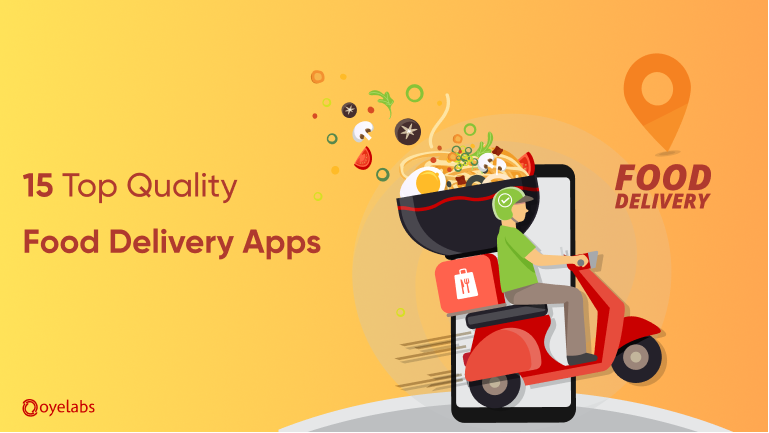How Much You Need To Expect You'll Pay For A Good Meal delivery service

The food service sector has experienced explosive growth in the past few years, driven by growing demand for effortless on-demand services. With platforms such as UberEats and DoorDash transforming the way consumers request meals, the focus has moved to developing cutting-edge food delivery apps. These apps provide customers the ability to place orders from their favorite restaurants and have it delivered directly to their doorstep. For businesses, the task is to leverage technology to enhance delivery operations and ensure a seamless user journey.
Building the Perfect Food Delivery App
Creating a successful food delivery app demands a thorough understanding of the industry shifts and business models that lead the sector. Whether creating a comprehensive platform or concentrating on niche markets like ghost kitchens or cloud kitchens, the app’s functionality must to cater to both customers and restaurants. Essential elements such as order tracking, efficiency improvement, and user satisfaction indicators hold a critical role in ensuring customer loyalty.
Restaurant Delivery Partnerships: A Winning Strategy
Eateries are increasingly establishing partnerships with delivery platforms to increase their market penetration. These partnerships help restaurants cater to a wider audience while reducing the challenges of running their own delivery operations. The success of such collaborations hinges upon technology integration, which boosts the app usability and enhances the user satisfaction. Through these collaborations, restaurants can boost customer loyalty and make sure that they stay relevant in a crowded market.
How KPIs Drive Food Delivery Profitability
For any business, knowing its key performance indicators (KPIs) is crucial to ensuring profitability. In the food delivery industry, KPIs such as delivery time, precision in orders, and customer satisfaction are essential. Measuring and improving these KPIs enables delivery services to provide a superior customer experience. Moreover, keeping an eye on profitability aids companies optimize operations, lower delivery fees, and improve overall effectiveness.
Customer Satisfaction and User Retention Strategies
A significant element in the growth of delivery apps is their capacity to keep customers through outstanding customer service. Providing quick service and resolving user feedback swiftly can assist companies enhance their service delivery. Moreover, introducing rewards systems and offering incentives like free delivery can increase customer loyalty. Customer satisfaction can be further strengthened by ensuring quality assurance and providing a smooth order management system.
The Role of Technology in Food Delivery
Innovative solutions is at the heart of modern food delivery services, helping companies optimize their operations and provide a seamless customer experience. From mobile app development Discover Our Solutions to real-time order monitoring, technology has a critical role in the success of delivery platforms. The application of data analytics to understand customer demographics and preferences allows delivery services to offer personalized experiences, furthermore enhancing customer interaction.
Competitive Analysis in the Food Delivery Market
The food delivery market is highly competitive, with many players competing for market share. Conducting a market evaluation enables companies to assess their position in the market and spot chances for growth. Delivery platforms must differentiate themselves by providing unique features such as ghost kitchen services, quick service, or niche cuisine options. Analyzing sector dominance and consumer behavior empowers companies to customize their services and stay ahead of the rivals.
The Impact of the Pandemic on Food Delivery Services
The COVID-19 pandemic has had a substantial impact on the delivery services, accelerating its expansion as more people Building a Successful Food Delivery Business Model turned to on-demand apps due to social distancing measures. The change has emphasized the importance of digital transformation in the food industry, with restaurants rapidly adopting e-commerce platforms and delivery apps. As the world adapts to new normals, delivery services must continue innovating to satisfy evolving consumer demands and ensure market expansion.
Investing in Food Delivery Startups
The food delivery industry presents plenty of startup opportunities, with investors keen on support companies that provide innovative solutions. From creating similar platforms to developing niche delivery apps, business owners have a variety of paths to pursue. Investors look for strong business models and the ability to scale, particularly in aspects like system efficiency, user experience (UX), and technological advancement. By concentrating on these areas, startups can secure substantial investments and gain a foothold in the industry.
Enhancing Food Delivery Service Profitability and Expansion
Growing a food delivery service demands a strong foundation built on market penetration, pricing strategies, and service differentiation. As local delivery services expand, businesses should focus on establishing a reliable delivery network and ensuring food safety. In addition, expanding the menu offerings, forming new collaborations, and adopting advanced tech solutions in food delivery will drive further expansion. By constantly enhancing delivery times and ensuring high user happiness, companies can maintain a competitive edge and boost income streams.
These themes offer a complete understanding of the food delivery ecosystem, with a focus on key aspects that propel the industry forward. Whether you’re a new company or an experienced business, concentrating on these areas will help you succeed in the competitive world of food delivery.